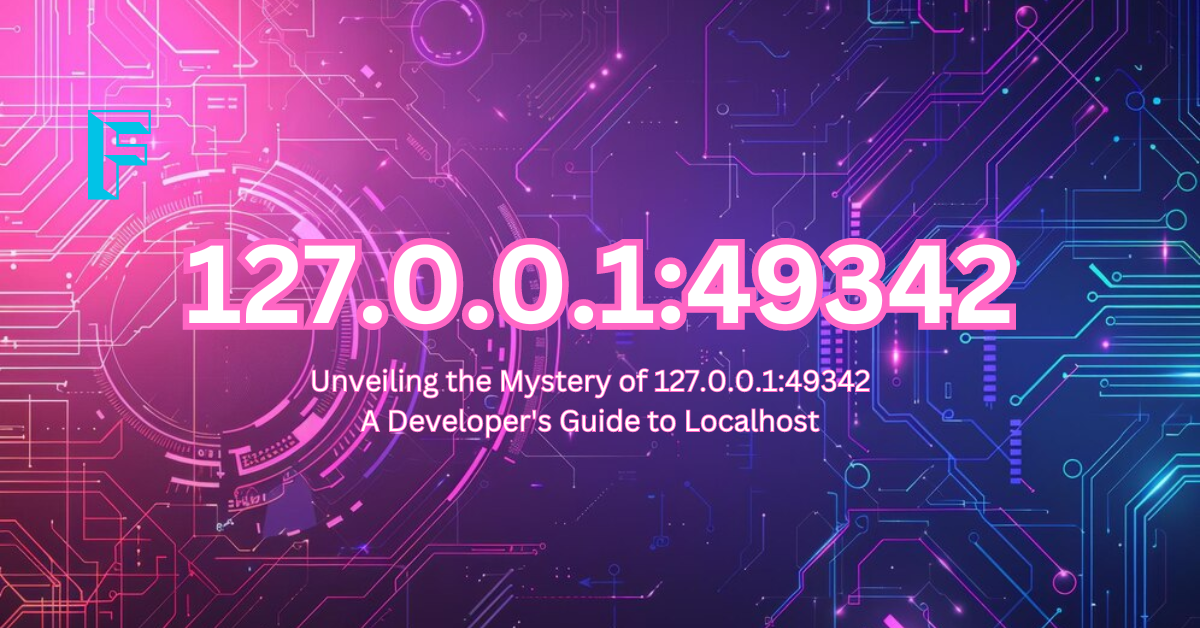
127.0.0.1:49342 may seem like a jumble of numbers, but it’s a powerful tool that developers use every day. This little address is key to testing web applications, APIs, and databases in a safe environment without going live on the internet. Whether you’re new to coding or just want to understand how your computer talks to itself, learning about 127.0.0.1:49342 can make your development process much easier.
127.0.0.1 is your computer’s way of saying “let’s keep this local.” Paired with port numbers like 49342, it allows multiple services to run without getting mixed up. By using 127.0.0.1:49342, you can test your app, website, or API right on your own machine, knowing it’s secure and hidden from the outside world.
What Does 127.0.0.1:49342 Mean? A Simple Explanation
The address 127.0.0.1:49342 might seem confusing at first, but it’s actually quite simple. The part “127.0.0.1” is called the loopback IP address, and it’s a way for your computer to talk to itself. This is important when testing new apps or websites on your computer before sharing them with others.
The number after the colon, “49342,” is called the port number. A port number helps different programs on your computer communicate without getting mixed up. Imagine you have many people knocking on different doors in a big house. Each door is like a port number, and each person gets their own door. So, 127.0.0.1:49342 helps developers work on their projects in a safe, local space.
The Importance of 127.0.0.1:49342 in Local Development
127.0.0.1:49342 is very important in local development. When developers are building websites or apps, they don’t want to make changes directly to live sites. Instead, they use the address 127.0.0.1 to test everything on their own machine. This way, they can see if things are working without making mistakes in front of real users.
The port, like 49342, lets different apps or servers run at the same time on your computer. This means you can be building a website and testing a new app without any problems. It’s also faster since you don’t need to go online. Everything happens on your local machine, and this helps keep your work safe and secure.
How to Use 127.0.0.1:49342 for Web Applications
If you’re building a web app, you’ll often see 127.0.0.1:49342 when testing your code. This means your computer is running a web server on the local network, and you can view your app in a browser like it’s already live. You type 127.0.0.1:49342 into your web browser, and the app loads just like it would online.
This is very helpful because it lets you catch bugs, errors, or problems before going live. Tools like Node.js or Flask make it easy to run local servers, and you can quickly check your changes. The port number may change every time you run the app, but the process stays the same: using 127.0.0.1 keeps everything local, and the port (like 49342) makes sure the right app is being tested.
Common Problems with 127.0.0.1:49342 and How to Fix Them
Even though 127.0.0.1:49342 is very useful, you can sometimes run into issues. One common problem is port conflicts. This happens when two programs try to use the same port at the same time. If you see an error message, try closing one of the programs or restarting your computer to free up the port.
Another issue might be a firewall or antivirus blocking the port. If your browser can’t connect to 127.0.0.1:49342, check your firewall settings and make sure it’s not blocking the connection. You may need to allow the app through the firewall to get it working. By following these simple steps, you can easily fix most problems with 127.0.0.1:49342.
Troubleshooting Tips for 127.0.0.1:49342
- Check for port conflicts by closing extra programs.
- Make sure your firewall isn’t blocking the connection.
- Restart your local server if the issue persists.
Following these steps can save you a lot of time and keep your work running smoothly!
Conclusion: Why 127.0.0.1:49342 Matters
In conclusion, 127.0.0.1:49342 is a really important tool for anyone building websites or apps. It helps developers test their work on their own computer before showing it to the world. This makes sure everything works smoothly without any mistakes. The loopback address, 127.0.0.1, keeps things local, and the port, like 49342, helps manage different projects at the same time.
By using 127.0.0.1:49342, you can catch problems early, fix them fast, and keep your work safe from the public until it’s perfect. So, next time you see this address, don’t be confused—it’s just your computer helping you make sure everything is working as it should!







